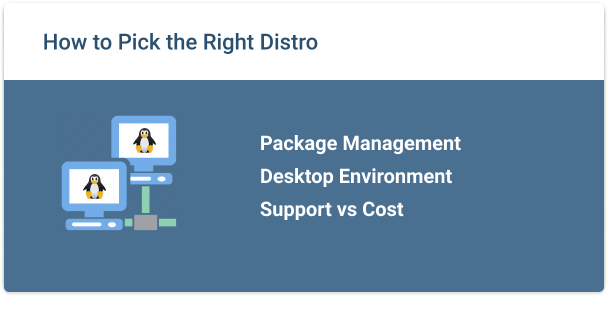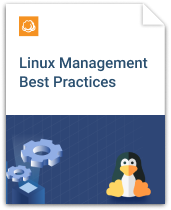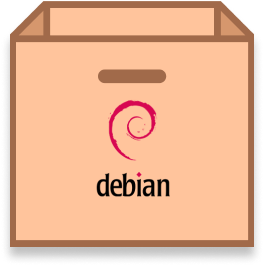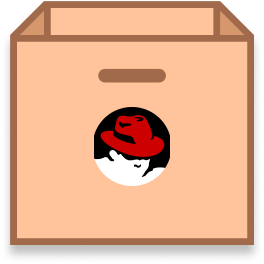MSP Business
Best Linux Distributions for SMBs and MSPs
When you first jump into the Linux world, you may think of Linux as simply an alternative operating system. In reality, Linux is a collection of hundreds of different operating systems, which are all built on the Linux kernel.
Each Linux-based operating system is referred to as a distribution (or distro for short). Choosing the right distribution requires understanding the difference between each one. Administrator preferences should be considered, as each system offers its own package managers and default desktop interfaces. Your system’s purpose must be considered as well; some distributions make for better servers, while some are better as workstations. The particular hardware that you are installing the operating system on should be considered, too.
There are a few major distributions, such as Red Hat, Debian and SUSE, that predominate in business settings. There are also hundreds of other lesser-known distributions, like Slackware, Gentoo and Arch Linux. These smaller-scale distributions cater to their own use cases. We will cover all of these here, and provide some suggestions on when to use which Linux distribution.
Picking the Right Distribution for Your Business

There are a number of considerations to weigh when determining which Linux distribution is best for you, such as which package manager the system uses, which graphical interfaces (if any) it offers by default and which software can run on it.
Package Managers
The default front end package manager for Debian-based Ubuntu is APT (short for Advanced Pack. APT is an easy-to-use package manager, and uses the apt-get command to install, update, and remove software packages. Red Hat distributions use YUM (short for Yellowdog Updater Modified) as the default package manager that offers a graphical interface as well. SUSE Linux distributions use YaST (Yet another Setup Tool) as not only a front-end package manager, but as a setup and configuration tool as well. YaST can also be used for managing the network and server functions of your system as well.
All of these front-end package managers are fully capable tools. System administrators that want a simple package management interface will probably lean towards Ubuntu’s APT or the command-line version of Red Hat’s YUM. Administrators who want a point-and-click graphical interface may prefer the YUM graphical interface or SUSE’s YaST.
Desktop Environments
Each of the major distribution families has a different take on desktop environments. Ubuntu and the Red Hat distributions both use Gnome as their default environments. Unlike Red Hat, Ubuntu also has Canonical’s own Unity Desktop available to administrators. SUSE Linux also makes Gnome available as a default environment, but users can optionally select the KDE environment instead during installation.
Like package managers, each of these desktop environments are fully functional. The decision comes down to the preference of the administrator. When deciding on the best Linux system for you, it’s a good idea to test out each desktop environment and get an idea of which one you prefer.
Cost vs. Support
Distributions like Red Hat Enterprise Linux and SUSE Enterprise Linux come with a corporate level of support that other distributions don’t offer. Canonical offers support for Ubuntu as well if users pay for it. Many businesses consider the costs associated with the support packages for each of these distributions to be worth the investment.
Businesses with less cash available may look to other distributions for cost savings. CentOS and OpenSUSE offer pretty much the same operating systems as RHEL and SUSE Enterprise Linux, without the costs of the associated support package. Each of these latter distributions is free to download and install.
Purpose
Each system has its own purpose or intended use case. Different purposes are better suited by different distributions. The primary use case for SUSE Enterprise Linux, Red Hat Enterprise Linux and CentOS is servers, even though they can be installed on workstations as well. In instances where a desktop environment isn’t needed and a lightweight system is preferred, advanced administrators may consider a distribution like Slackware. In environments where client machines and servers run on the same network, Ubuntu may be a good fit. If the latest and greatest technology is preferred, Fedora may be the best choice.

Distribution “Families”
There are three main “families” of Linux distributions: Debian, Red Hat, and SUSE. Most other Linux distributions use one of these three distributions as their foundation. Let’s take a look at each of these families.
Debian

Debian, which dates all the way back to 1993, is one of the oldest Linux distributions still being developed today. Presently, the most popular Debian-based system is Ubuntu.
Ubuntu, distributed by the UK-based company Canonical, is one of the most popular Linux distributions available today. It is free to download, install and use. Ubuntu is packaged in three different editions - Server, Desktop,and Core.
The default desktop environment, as of 2019, is Gnome 3. In recent years Ubuntu also supported the Canonical-developed Unity desktop environment as well. The default front-end package manager for Debian distributions is APT.
Because it is generally understood as a very simple operating system to install, many first-time Linux users start by using Ubuntu. Some popular Windows applications, such as the Firefox web browser and Thunderbird email client, can be run on Ubuntu. Ubuntu offers new releases every six months, with major long-term support (LTS) releases available every two years.
Red Hat
 Red Hat’s Linux offerings come in three different main forms.
Red Hat’s Linux offerings come in three different main forms.
- Red Hat Enterprise Linux (RHEL) is the flagship operating system, and is used on servers everywhere. CentOS is the free version of Red Hat Enterprise Linux.
- CentOS offers the same packaging as RHEL, but it doesn’t come with the same support that Red Hat Enterprise Linux offers. All support for the CentOS distribution is community-driven via technical forums.
- Fedora is sponsored by Red Hat, and offers newer, bleeding edge features that are not yet available in RHEL.
Red Hat Enterprise Linux was first released in 2002. It is developed and licensed by Red Hat. Unlike Ubuntu’s server operating system, it is not free. One license of the Red Hat Enterprise Linux Server with “self-support” costs $349 (prices increase for additional levels of support and add-ons). Many businesses find that the level of support offered by Red Hat makes the cost of the operating system worth the investment.
Administrators who want the RHEL operating system but don’t want to pay for it can use CentOS instead. CentOS was originally released in 2004, and Red Hat officially took it over in 2014. Red Hat doesn’t offer any official support for the CentOS distribution, but there is a large community of users on the internet that continue to share information and support each other.
Fedora is another distribution supported by Red Hat. Like CentOS, Fedora is also free to install and use. Fedora will generally offer features before they become available in the RHEL operating system. Like Ubuntu, Fedora offers both Workstation and Server editions.
All three of the main Red Hat distributions have a few things in common. The Red Hat Enterprise Linux, CentOS, and Fedora operating systems use YUM as the default front-end package manager. All three distributions also feature Gnome as the default desktop environment.
SUSE
 SUSE Linux, while not as popular as Debian-based Ubuntu or any of the Red Hat distributions, is still considered to be one of the mainstream Linux distributions. SUSE was originally founded as a Unix-type system in Germany in 1992. Since then, it has changed hands a number of times, and is now owned by EQT, a Swedish private equity group.
SUSE Linux, while not as popular as Debian-based Ubuntu or any of the Red Hat distributions, is still considered to be one of the mainstream Linux distributions. SUSE was originally founded as a Unix-type system in Germany in 1992. Since then, it has changed hands a number of times, and is now owned by EQT, a Swedish private equity group.
There are two distributions that fall under the SUSE family - SUSE Enterprise Linux and the more popular OpenSUSE. OpenSUSE is the freely offered edition, and still features the latest updates. SUSE Enterprise Linux, the commercially priced edition, offers features that OpenSUSE does not, such as a high availability edition and support services.
OpenSUSE has two editions - Tumbleweed and Leap. Leap offers stable releases about every six months, while Tumbleweed is continuously updated. OpenSUSE traditionally featured KDE as its default desktop environment, but now allows users to select either the Gnome or KDE environment upon installation. The default front-end package manager for all OpenSUSE editions is YaST.
Smaller-Scale Distributions
While Debian-based Ubuntu, SUSE, and the Red Hat distributions take up most of the Linux market share today, there are a few additional smaller distributions worth mentioning as well, including Arch Linux, Slackware, and Gentoo:
- Arch Linux is a simple, bare-bones distribution. Users that want to add packages will have to do so following the installation of the operating system, as there are not many packages included on initial install. Arch Linux users see this bare-bones installation as a feature, not a bug. There is no default desktop environment, and due to Arch Linux’ embracing of rolling releases, there are no major editions.
- Gentoo Linux is a highly customizable Linux distribution. Unlike many other Linux distributions, all source code is compiled locally on the user’s computer. Gentoo’s most famous family member is Google’s ChromeOS, the operating system that every Chromebook is built upon.
- Slackware is one of the older versions of Linux, dating back to 1993. Because of its age, many other Linux systems have been based off of this system. Slackware offers no default desktop environment, making it difficult to use for first-time users and is mostly popular with long-time Linux administrators.
Conclusion
Linux isn’t just one operating system. It’s a large family tree of different operating systems, or distributions. When deciding on the best distribution for you, it’s important to understand what options are available, and what sets each distribution apart.
Be sure that you have a good idea which package managers meet your needs, and which desktop environments you prefer. Have an understanding, too, of what type of support you’ll need for your system, and of your system’s purpose. Finally, be honest with yourself about your level of Linux expertise. Some distributions are easier to use than others.
Once you have an understanding of all of the above, you will be able to narrow down your distribution choices, and pick out the system that will be the best fit for you.


